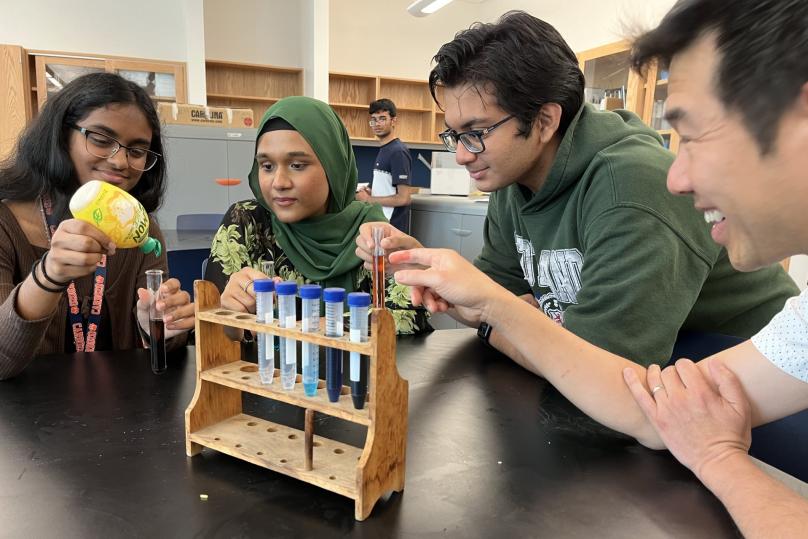
How MƒA helped Patrick Chan create and implement environmentally sustainable labs in his classroom.
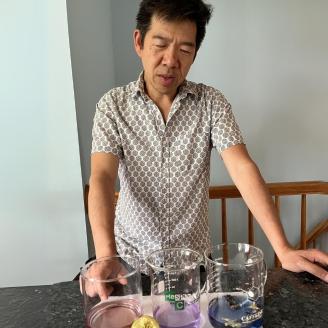
Over two decades teaching chemistry at Benjamin N. Cardozo High School in Queens, MƒA Master Teacher Patrick Chan, Ph.D. has loved doing experiments in class with his students to demonstrate key concepts such as chemical equilibrium. For a long time, however, he felt guilty about disposing of the toxic heavy metal pollutants they used in the lab, including copper, cobalt and nickel, by simply washing them down the sink.
After mulling over the question of how he and fellow educators might teach chemistry in a more environmentally responsible manner, Dr. Chan enrolled in the MƒA course “Green Chemistry Classroom” during the 2022–23 school year. In the course, he learned about the Green Lab movement, a global initiative encouraging laboratories to become more sustainable. He and his fellow participants in the course worked together to investigate the principles of green chemistry, as determined by the Beyond Benign Organization, and develop and carry out new experiments that conformed to those principles.
“A ‘green lab’ to me was always [using] baking soda mixed with vinegar,” Dr. Chan says. “This very simple thing cannot really demonstrate much about the concepts I want to teach in the classroom. But that course opened my eyes.”
Dr. Chan soon brought the experiments they did in the course back to his own AP chemistry classroom. He and his students recreated a recycling-focused lab, in which they converted plastic cups made of polylactic acid into a cleaning solution through a process of base hydrolysis. “A lot of polymer would take eons to degrade and is obviously very un-environmentally friendly,” Dr. Chan explains. “In that lab, we learned how to recycle the polylactic acid and make it into a kind of mild detergent to clean the whiteboard. The students really liked it, because you can see [the cup] change into a solution that’s usable, to demonstrate the idea of recycling and biodegradability.”
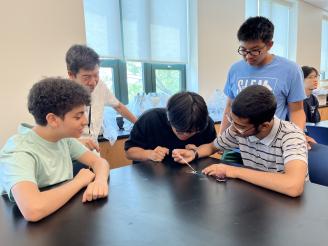
In another experiment, Dr. Chan tasked his students with building photovoltaic solar cells using an unexpected material: blackberries. “When I announced that we were going to generate electricity using blackberry juice, skeptical eyes stared back at me,” Dr. Chan recalls. But the students were excited to try something new, especially something they knew was kinder to the environment.
“We created a very mini solar panel, and it was able to generate almost 200 millivolts,” Dr. Chan says. “That was also very impressive to the students. They couldn't believe it’s something that you can do in the classroom.”
Before the Green Lab course, Dr. Chan says, any lab experiment related to electrochemistry might have involved “a beaker of copper solution, and maybe iron, maybe zinc, another reagent. In the end, you generate this toxic material.” In addition to the actual experiments, Dr. Chan believes his own willingness to implement more sustainable lab practices engaged and inspired his students. “They see I am trying, as a teacher, to do my part and make a small impact on the environment,” he says. “Besides teaching the science, I try to explain to them why I have to go out of my way to learn this new thing.”
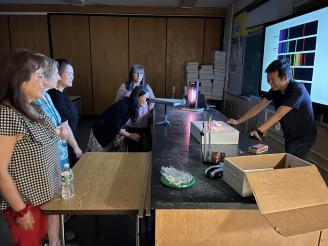
Due to budgetary concerns, Dr. Chan’s school no longer has a lab technician, so he and his science department colleagues design and run all their own labs. “After I shared what I learned, other chemistry teachers were also eager to make changes,” Dr. Chan says. With his help, his colleagues replaced the chemicals used in another common chemistry experiment, a flame test used to study atomic structure, with simple candles purchased online. “They’re basically teaching the same concept, but you burn it, and you don’t have any solution residue left.”
Dr. Chan’s experience with the Green Lab course has given him confidence to change the way he approaches lab experiments. “Before when I thought about this, I didn't know it's so doable,” he says. “But now [the course] made me feel like it is doable.” With the continued support of his MƒA colleagues, he is implementing other sustainable changes, such as using a special type of tea bag (instead of toxic cobalt) to demonstrate chemical equilibrium and using Gatorade to demonstrate the process of filtration by isolating different dyes in the liquid.
Dr. Chan is invigorated by seeing the impact on his students, including one senior who recently told him she’s headed to college to study environmental science or environmental engineering, thanks in no small part to his AP chem class. “She was inspired by what we’re doing in the classroom to think about chemistry in a different perspective,” Dr. Chan says. “I think that's one of the main outcomes of this — the students are inspired to think about, oh, I really can do something for the environment if I want to participate.”
“My students see I am trying, as a teacher, to do my part and make a small impact on the environment. Besides teaching the science, I try to explain to them why I have to go out of my way to learn this new thing.”
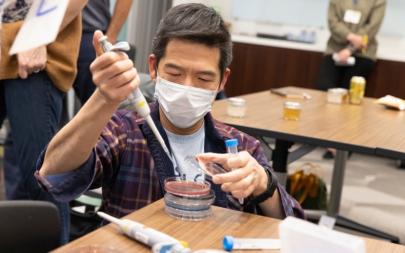
During a MƒA PLT, Dr. Chan learned about tools and resources to teach green chemistry. He soon adopted sustainable science curriculum and implemented environmentally sustainable labs in his classroom.